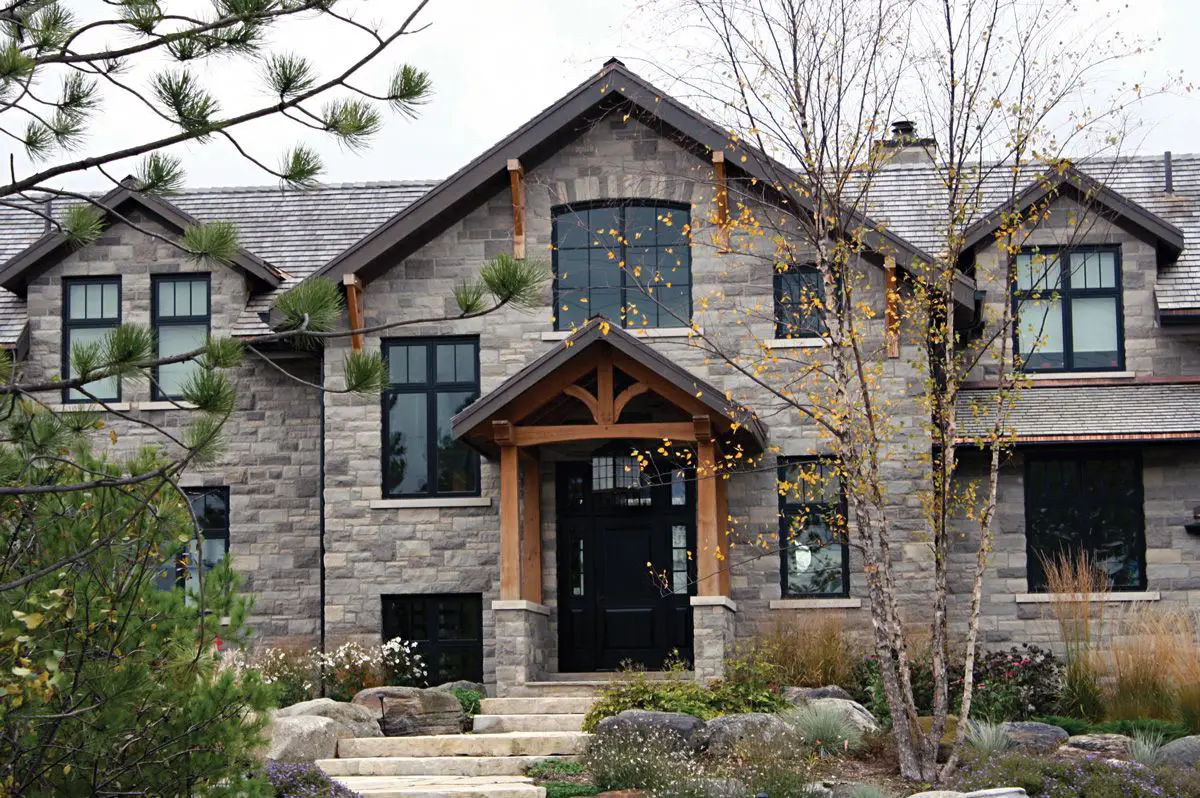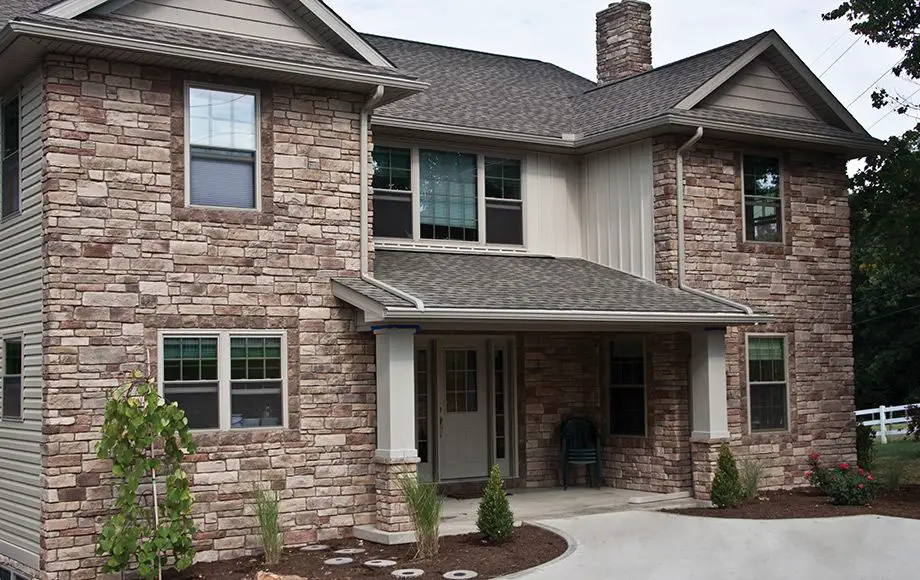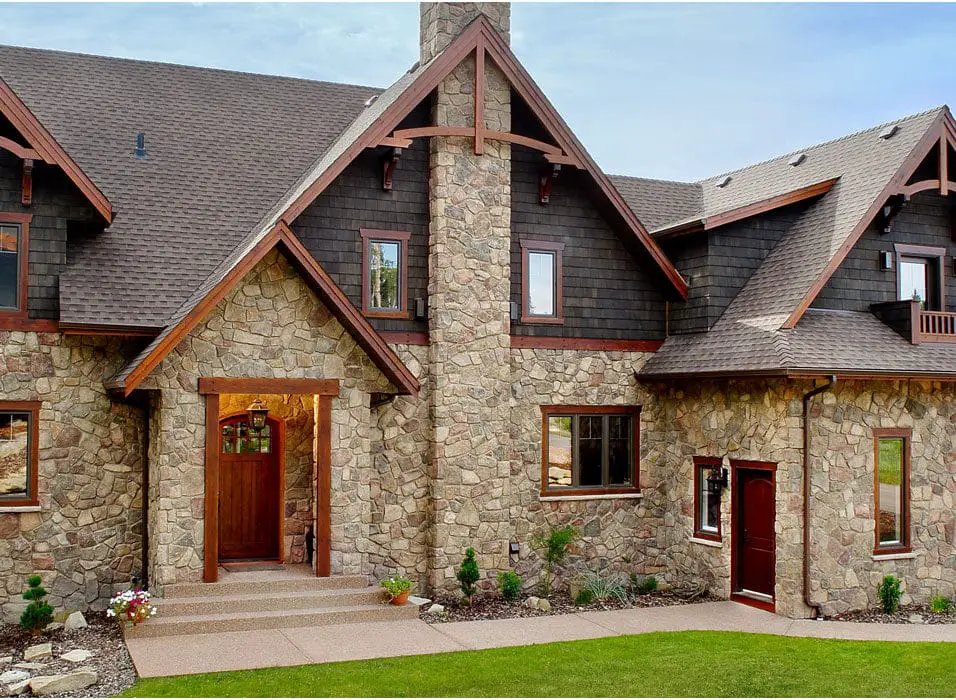How To Tell Difference Between Brick And Brick Veneer
Introduction
How To Tell Difference Between Brick And Brick Veneer: Distinguishing between brick and brick veneer may seem straightforward at first glance. But it’s a critical skill in construction and renovation. “How To Tell the Difference Between Brick and Brick Veneer”. Is a comprehensive guide that delves into the nuances of these two building materials, offering valuable. Insights for homeowners, builders, and anyone involved in the construction industry.
Brick is an old building material that has been used for hundreds of years. It has a unique look and is used to hold buildings together. Brick veneer, on the other hand, is a newer invention that has become popular because it looks good and doesn’t cost much. It is important to know the variations among these two materials. So that you can make smart choices when arranging, renovating or reviewing buildings.
Throughout this guide, we will explore the key characteristics that set brick and brick veneer apart. Including their composition, installation methods, structural roles and visual cues. By the end, you’ll be equipped with the knowledge to discern between these materials accurately. Ensuring that your construction or renovation projects proceed smoothly and meet the desired design and performance criteria.
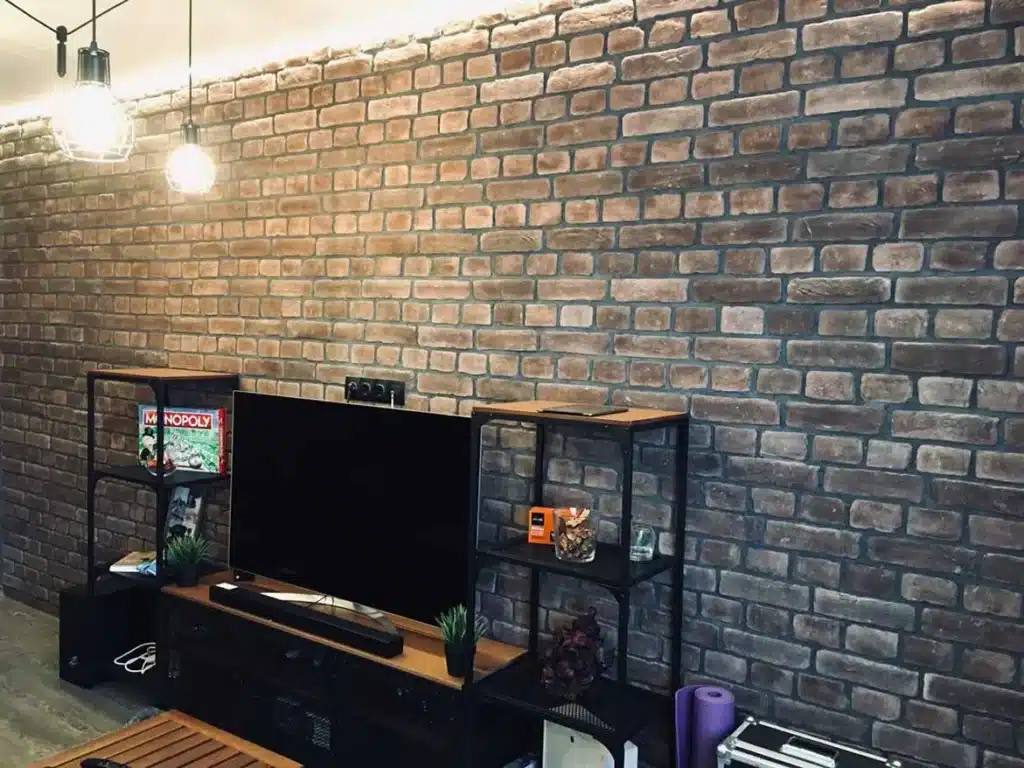
Is there a difference between brick and brick veneer?
Yes, there is a significant difference between brick and brick veneer, primarily in terms of their construction, purpose and structural roles:
Brick:
Construction and Thickness: Brick refers to full-sized, solid bricks used as load-bearing components in a building’s structure. These bricks are typically thick, measuring about 3.5 inches (88.9 millimeters).
Load-Bearing: Bricks are integral parts of a building’s structural framework. They are designed to support the weight of the building and play a crucial role in its structural integrity. In other words, brick is a load-bearing material that carries the vertical loads of the structure.
Usage: Solid brick is commonly used in older construction and traditional masonry buildings. It provides both structural support and aesthetic appeal to the building.
Brick Veneer:
Construction and Thickness: Brick veneer, on the other hand, is a thin layer of bricks applied. To the exterior of a building, primarily for decorative purposes. These bricks are much thinner, usually around 1 inch (25.4 millimeters) thick.
Non-Load-Bearing: Brick veneer is not load-bearing; it does not bear the weight of the structure. Instead, it serves as a non-structural facing material that is attached to the building’s inner wall or structural framework.
Usage: Brick veneer is commonly used in modern construction. It provides the appearance of a solid brick exterior while being more cost-effective and lighter in weight. The load-bearing function of the building is carried out by the inner wall or structural framework, not the brick veneer.
What is the difference between veneer common brick and face brick?
The main difference between them is simple:
The difference between veneer common brick and face brick lies in their intended use, appearance, and characteristics:
Face Brick:
Intended Use: Face bricks, also known as “face” or “facing” bricks, are specifically manufactured for their aesthetic appeal and are meant to be visible on the exterior of a building. They are designed for decorative purposes.
Appearance: Face bricks are carefully crafted to have a uniform and attractive appearance. They often have smooth, textured, or glazed surfaces, and they come in various colors and styles. Face bricks are selected for their visual appeal and are chosen to enhance the overall look of a building.
Quality: Face bricks are held to higher quality standards because they are visible and contribute to the building’s curb appeal. They are expected to have consistent color, size, texture, and finish.
Exterior Use: Face bricks are used for the visible façade of a building, providing an aesthetically pleasing and decorative exterior.
Common Brick:
Intended Use: Common bricks, on the other hand, are utilitarian bricks primarily used for structural purposes. They are not meant to be exposed to view and are typically hidden within the interior or structural elements of a building.
Appearance: Common bricks may have irregularities, rough surfaces, or variations in color. They are not manufactured with a primary focus on aesthetics. Instead, their emphasis is on strength and function.
Quality: While common bricks are structurally sound. They may have variations in appearance that do not meet the standards required for face bricks. These variations are acceptable because they are not intended to be seen.
Interior Use: Common bricks are used within the interior or hidden structural elements of a building. Such as load-bearing walls. Where their appearance is not a primary concern.
What does a brick veneer house look like?
It will have bricks laid with mortar between – just like a home constructed with double brick. It may have been painted over, rendered, bagged or have brick or stone tiles attached also, like a brick masonry home.
A brick veneer house typically has an exterior that resembles a solid brick house, but there are some distinguishing features:
Thin Layer of Brick: The exterior of a brick veneer house has a layer of bricks that is relatively thin. Typically around 1 inch (25.4 millimeters) thick. This layer is applied over the house’s structural framework, which can be made of wood, steel, or other materials.
Non-Load-Bearing: The brick veneer does not bear the structural load of the house; instead, it serves as a decorative facing. The actual support of the house is provided by the internal structural elements.
Realistic Brick Appearance: The bricks used in brick veneer closely resemble traditional, full-sized bricks. They come in various colors, textures, and patterns to create an authentic brick appearance.
Flashing and Weep Holes: Brick veneer houses typically incorporate flashing and weep holes to manage moisture. These elements help prevent water from entering the building while allowing any trapped moisture to escape.
Insulation: Insulation materials are often placed between the structural framework and the brick veneer. To enhance energy efficiency and thermal performance.
Overall, a brick veneer house offers the timeless and appealing. Look of brick construction while being more cost-effective than a solid brick structure.
How do I know if my house has brick veneer?
One way you can sometimes spot brick veneer is by looking at the sides of the house. If the front is brick but the sides and back are covered in siding of some kind, you know the front is not there for structural support and that it’s only a single layer thick. Generally, brick is pretty low-maintenance.
Determining whether your house has brick veneer or solid brick construction can be done through a few methods:
Visual Inspection: Examine the exterior of your house. If the bricks appear to be relatively thin, typically around 1 inch (25.4 millimeters) thick, and are primarily for decorative purposes, it is likely a brick veneer. If the bricks are thicker and part of the structural framework, it is solid brick.
Measure Thickness: Measure the thickness of the brick layer. A thickness of around 1 inch suggests brick veneer. While a thickness of about 3.5 inches (the standard thickness of solid bricks) indicates solid brick construction.
Consult Building Plans: If you have access to the original building plans or blueprints for your house, they should specify whether it was constructed with brick veneer or solid brick.
Consult a Professional: If you are uncertain, consider hiring a qualified building inspector or a masonry expert. To assess your house and provide a definitive answer.
Understanding the construction type of your house is essential for maintenance, renovation, and future modifications.
Is brick veneer cheaper than brick?
Brick veneer is a more cost-effective way to get the look and feel of solid brick. On average, you can expect to pay $4.00 to $10.00 per square foot. Since brick veneer is much easier to install than solid brick, you can also bypass the cost of hiring a mason.
Yes, brick veneer is generally cheaper than solid brick construction. The cost savings stem from several factors:
Material Costs: Brick veneer uses a thinner layer of bricks, which reduces the overall cost of materials compared to solid brick construction.
Labor Costs: Installing brick veneer is typically less labor-intensive than constructing a full brick wall, leading to lower labor costs.
Structural Framework: Brick veneer houses have a structural framework that is often less expensive to build compared to a full brick load-bearing structure.
Insulation Efficiency: Brick veneer houses can incorporate insulation between the structural framework and the brick veneer, improving energy efficiency and potentially reducing heating and cooling costs.
While brick veneer offers cost savings, it still provides the aesthetic appeal and durability of traditional brick construction, making it a popular choice in residential and commercial building projects.
What is the gap between brick veneer and wall?
In brick veneer construction, there is typically an air gap, commonly referred to as a “cavity,” between the brick veneer and the inner wall, which is often made of wood, steel framing, or concrete block. The gap serves several essential purposes:
Moisture Management: The air gap is a way for water to escape. Any water that gets through the brick layer, whether it’s from rain, condensation, or something else, can flow down because of gravity. Crying holes, which are small holes in the bottom of the wall, let this water out so that it doesn’t build up inside the wall system. This way for water to drain helps keep the building safe from damage.
Thermal Performance: The air gap provides insulation benefits by creating a buffer of air between the brick veneer and the inner wall. This buffer helps reduce thermal bridging, which occurs when heat conducts through materials, and enhances the energy efficiency of the building. It can help keep the interior warmer in winter and cooler in summer.
Structural Separation: The air gap separates the load-bearing inner wall (also called the “backup wall” as well as “substrate”) from a brick layer that doesn’t carry any weight. The inner wall and brick veneer work together to keep the building’s structure strong, and the brick veneer is just for looks. That is, the brick surface doesn’t hold any weight; it depends on the interior structure to stay in place.
Does brick veneer crack?
As time goes on, base settling will also cause cracks to your brick veneer. It’s normal for foundations to crack, so depending on where the veneer of brick is, you may need to make some superficial foundation repairs. You can, however, fix the brick finish on the outside of the house by yourself.
Brick veneer can develop cracks over time, much like any other building material. The likelihood and severity of cracks depend on various factors, including the quality of installation, environmental conditions, and the structural stability of the building. Common reasons for brick veneer cracking include:
Settlement: Buildings can settle over time, causing minor cracks in brick veneer. Adequate foundation design and construction practices can help minimize settlement-related cracking.
Thermal Expansion and Contraction: Changes in temperature can lead to the Different materials can expand and contract, which can cause small cracks. This problem can be fixed with the right expansion points and control joints.
Moisture and Freeze-Thaw Cycles: Exposure to moisture and freeze-thaw cycles can cause brick veneer to crack, especially if water becomes trapped within the wall. Proper waterproofing and drainage measures can prevent this.
Structural Issues: Cracking may occur if the structural framework of the building experiences issues or if there is inadequate support for the brick veneer.
Poor Installation: Inadequate installation practices, such as improper mortar mixing or application, can lead to cracks. Hiring experienced masons and following best practices can prevent these issues.
What is the life of brick veneer?
A brick veneer house can last 50-100 years if made with the best quality material. Its lifespan does depend on the quality of the brick. As brick veneer is thin sheets of brick, they are expected to be less durable than solid brick. Bricks are porous, meaning they’re able to absorb water.
The life expectancy of brick veneer can vary based on several factors, including the quality of materials, construction practices, environmental conditions, and maintenance. However, well-constructed brick veneer can have a lifespan of 50 to 100 years or more.
Factors that contribute to the longevity of brick veneer include:
Proper Installation: A well-executed installation by experienced masons using quality materials is crucial for the long-term performance of brick veneer.
Weather Resistance: With the right weatherproofing and drainage methods, the brick veneer can be kept safe from problems caused by water and freeze-thaw cycles.
Maintenance: Regular maintenance, such as repointing mortar joints and sealing, can extend the life of brick veneer and address minor issues before they become major problems.
Structural Integrity: For the brick veneer to last, it is important to make sure that the building’s framework stays stable and supports it properly.
Environmental Factors: The weather, air quality, and pollution levels in the area can all shorten or lengthen the life of brick veneer.
Design and Detailing: Design elements like expansion joints and control joints can keep the veneer from breaking and make it last longer.
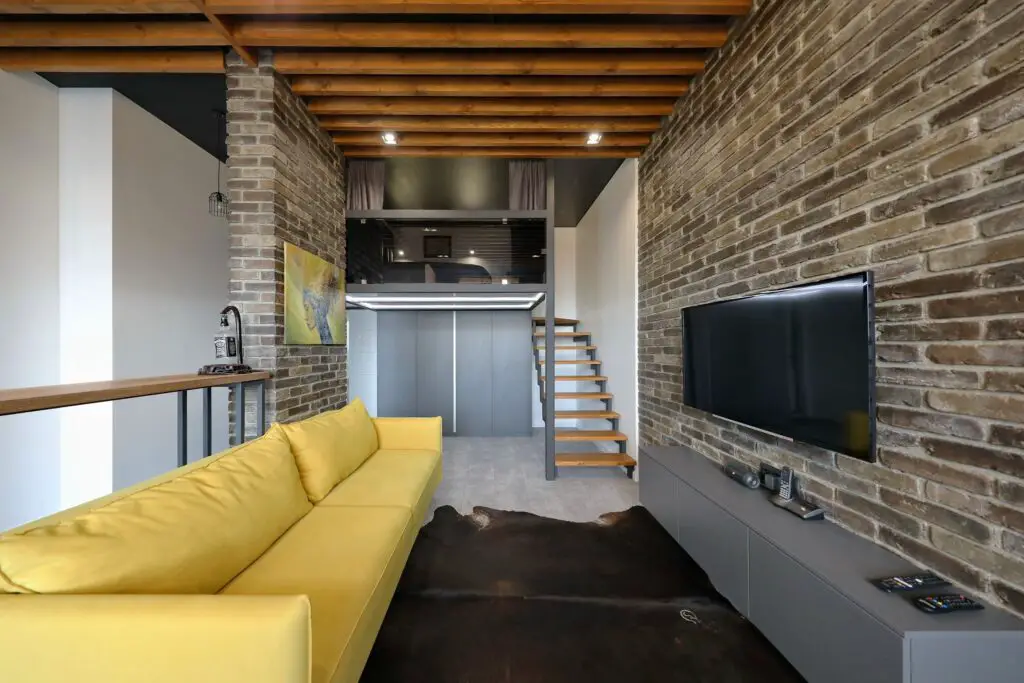
Conclusion
Being able to differentiate between brick and brick veneer is fundamental in the world of construction and design. This skill ensures that projects are executed correctly, maintaining structural integrity and aesthetic harmony.
In our guide on “How to Identify the Difference Between bricks and Brick Veneer,” we’ve talked about some of the most important differences, such as the types of materials used, how they are installed, and what their structural roles are. Knowing these differences will help you choose the right materials for your projects, whether you’re making, fixing up, or inspecting buildings.
Brick, with its robust presence and load-bearing capacity, has a legacy spanning centuries. Masonry veneer, a more recent addition to the construction toolkit, provides an appealing facade while offering cost-effectiveness and design flexibility.
When you start building or remodeling, remember that correctly identifying brick and brick veneer is important for both the functionality and life of your projects as well as their looks. Now that you know these things, you can easily navigate the world of building resources and be successful in your design and construction projects.



